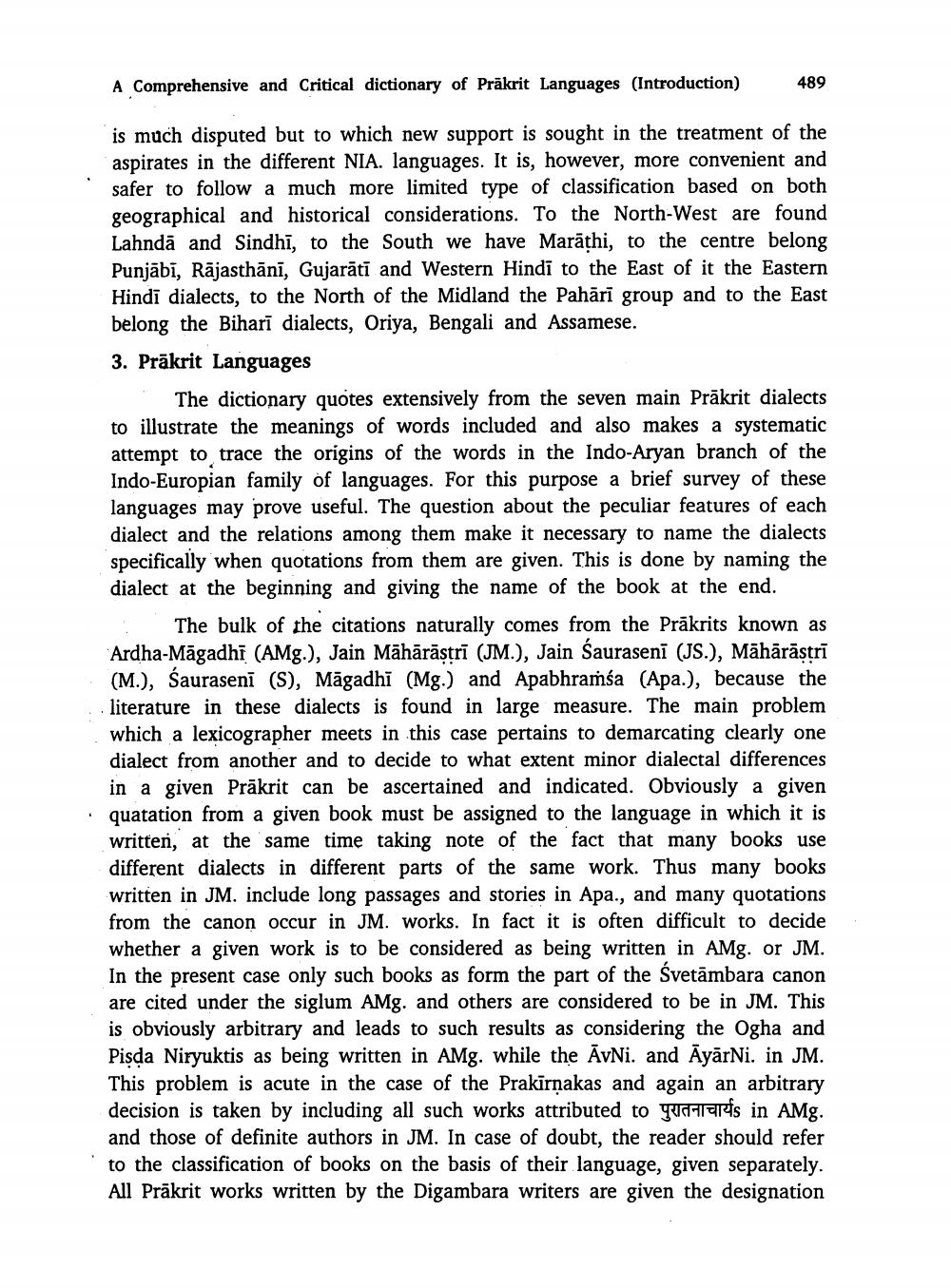________________
A Comprehensive and Critical dictionary of Prākrit Languages (Introduction)
489
is much disputed but to which new support is sought in the treatment of the aspirates in the different NIA. languages. It is, however, more convenient and safer to follow a much more limited type of classification based on both geographical and historical considerations. To the North-West are found Lahndā and Sindhī, to the South we have Marāthi, to the centre belong Punjābi, Rājasthānī, Gujarātī and Western Hindi to the East of it the Eastern Hindi dialects, to the North of the Midland the Pahārī group and to the East belong the Biharī dialects, Oriya, Bengali and Assamese. 3. Prākrit Languages
The dictionary quotes extensively from the seven main Prākrit dialects to illustrate the meanings of words included and also makes a systematic attempt to trace the origins of the words in the Indo-Aryan branch of the Indo-Europian family of languages. For this purpose a brief survey of these languages may prove useful. The question about the peculiar features of each dialect and the relations among them make it necessary to name the dialects specifically when quotations from them are given. This is done by naming the dialect at the beginning and giving the name of the book at the end.
The bulk of the citations naturally comes from the Prākrits known as Ardha-Māgadhi (AMg.), Jain Māhārāstrī (JM.), Jain Sauraseni (JS.), Māhārāstrī (M.), Sauraseni (S), Māgadhi (Mg.) and Apabhramsa (Apa.), because the literature in these dialects is found in large measure. The main problem which a lexicographer meets in this case pertains to demarcating clearly one dialect from another and to decide to what extent minor dialectal differences in a given Prākrit can be ascertained and indicated. Obviously a given quatation from a given book must be assigned to the language in which it is written, at the same time taking note of the fact that many books use different dialects in different parts of the same work. Thus many books written in JM. include long passages and stories in Apa., and many quotations from the canon occur in JM. works. In fact it is often difficult to decide whether a given work is to be considered as being written in AMg. or JM. In the present case only such books as form the part of the Svetāmbara canon are cited under the siglum AMg. and others are considered to be in JM. This is obviously arbitrary and leads to such results as considering the Ogha and Pisda Niryuktis as being written in AMg. while the AvNi. and AyārNi. in JM. This problem is acute in the case of the Prakīrņakas and again an arbitrary decision is taken by including all such works attributed to Yeders in AMg. and those of definite authors in JM. In case of doubt, the reader should refer to the classification of books on the basis of their language, given separately. All Prākrit works written by the Digambara writers are given the designation




